Spider-Man: Across the Spider-Verse
Spider-Man: Across the Spider-Verse
As someone who has followed Spider-Man in various media for years, I found the movie to be both a refreshing take on the mythos and a deep dive into the creative possibilities of animation. From the very beginning, every frame and moment seemed meticulously crafted to not only entertain but to also challenge conventional storytelling. This experience felt like a personal invitation into a realm where every corner of the Spider-Verse was bursting with inventive flair, emotional resonance, and a playful subversion of expectations.
The Artistry of Animation
The animation in Spider-Man: Across the Spider-Verse is nothing short of a visual feast. I was rendered speechless by how the filmmakers blend various animation styles to reflect the unique realities of each character’s universe. As I watched the sequences shift from bold, comic-inspired color palettes to more nuanced, painterly aesthetics, I was constantly aware of the artistic experimentation unfolding on screen. The use of dynamic textures and hand-drawn effects gave each scene a handcrafted quality that made the entire narrative feel both grounded and fantastically surreal at the same time. This attention to detail in the artistry of the animation deepened my engagement, inviting me to not simply see the movie, but to experience it as a living canvas of storytelling.
The Richness of the Narrative Tapestry
The narrative complexity of the film swept me into an intricate web of interwoven stories that span multiple dimensions. I found the storyline to be a delicate balance between personal stakes and universe-shattering consequences. Part of the brilliance lay in how the movie explored themes of identity, responsibility, and the inevitable consequences of our past choices. Each universe within the Spider-Verse is explored with its own lore and character development, and as I followed the protagonist’s journey, I felt a constant evolution in both his internal world and his external challenges. This multi-layered narrative provided me with not just action-packed sequences, but also moments of introspection that resonated deeply with my own experiences of growth and change.
The Complexity of Characters and Their Voices
For me, one of the most compelling aspects of Spider-Man: Across the Spider-Verse was its innovative approach to character development. Every Spider-person I encountered was imbued with a distinct personality, backstory, and set of motivations that made each of them memorable in a unique way. I particularly enjoyed how the film played with the audience’s preconceptions, transforming what might have been stereotypical roles into multi-dimensional figures with vulnerabilities, strengths, and relatable fears. The voice acting was exceptional, with each actor delivering performances that captured the essence of their characters perfectly. Listening to the dialogue, I was frequently caught off guard by moments of humor and poignancy that elevated the story beyond mere spectacle into an emotionally rich experience.
The Powerful Use of Music and Soundscapes
A major component of my immersive experience was the film's extraordinary musical score and sound design. The soundtrack weaves seamlessly with the narrative, pulsating through high-energy sequences and soft, reflective moments alike. Every beat and melody felt precisely calibrated to heighten the emotional impact of each scene. I remember being particularly moved during a quieter moment where the music subtly shifted to underscore the internal conflict of the protagonist. This symphony of sound collaborated with the visuals to create an atmosphere where every scene, whether frenetic or introspective, portrayed a delicate balance of tension and release. The thoughtful use of audio elements enriched my journey through the Spider-Verse, making moments feel grand yet intimately personal.
The Dance of Action and Emotion
Spider-Man: Across the Spider-Verse delivered action sequences that were as much a ballet of movement as they were aggressive clashes between forces of destiny. I marveled at the choreography during fight scenes, where every motion was intentional and every leap or spin was imbued with both artistry and raw passion. These sequences were not merely about high-energy stunts; they carried the emotional weight of a character confronting obstacles that went beyond physical threats. I felt every block, every pivot, and every collision as though they were manifestations of his inner struggles and determination. The delicate balance between action and vulnerability was maintained throughout the film, ensuring that even the most spectacular scenes resonated on a personal level.
The Integration of Technology and Traditional Storytelling
One of the aspects that truly captivated me was how the film seamlessly integrated cutting-edge animation techniques with deeply traditional narrative elements. The digital artistry went beyond modern computer graphics by incorporating hand-drawn details and experimental visual effects that honored the comic book origins of the hero. I was fascinated by sequences that looked almost like living sketches, where the backgrounds and characters seemed to interact in ways that defied the rules of conventional animation. This fusion of new and old methodologies opened up new avenues for storytelling, making me appreciate the film as an evolving art form that honors its roots while boldly venturing into unexplored territories.
The Emotional Color Palette
Throughout the movie, I found that the use of color played a significant role in conveying the emotional landscape of the narrative. The careful modulation of hues—from the vibrant bursts during moments of triumph to the subdued tones in scenes of introspection—was a masterclass in visual storytelling. Each scene felt like a painting meticulously chosen to evoke specific feelings, allowing me to experience the story on an almost subconscious level. As the protagonist navigated the challenges of multiple realities, I was not only entertained by the external adventure but was also invited to dive deep into a spectrum of emotions that spanned wonder, anxiety, hope, and resilience. The visual cues became as integral to the film as the dialogue, allowing me to immerse myself fully in the emotional undercurrents of the Spider-Verse.
The Intricacies of Interdimensional Storytelling
The exploration of parallel universes in Spider-Man: Across the Spider-Verse compelled me to think about identity and destiny in ways I had never considered before. The film’s ability to jump between disparate realities without losing its thread of coherence not only showcased technical prowess but also a thoughtful meditation on what it means to exist in a complex multiverse. I found myself captivated by how minor variations in each universe led to entirely different interpretations of the hero’s legacy. The narrative carefully explained elements that could have been overwhelmingly intricate, presenting them in a way that was accessible yet thought-provoking. By weaving together these diverse threads, the movie managed to create a tapestry that was rich in lore and emotionally resonant, inviting me to question the nature of choice and chance in every facet of life.
The Rhythm and Pacing of the Experience
The pacing of the film was meticulously handled, guiding me through moments of rapid adrenaline-pumping action and quieter, more reflective intervals. The transitions between these moments were executed with an almost musical precision that kept my engagement at a consistently high level. I particularly appreciated when the narrative slowed down to allow character interactions and subtle gestures to shine, revealing layers of meaning that would have otherwise been lost in a constant barrage of action. The timing of reveals and the buildup of tension were expertly managed throughout the film, ensuring that each shift in tempo felt earned and added depth to the overall narrative. This attention to pacing made the experience feel both exhilarating and emotionally rewarding as I journeyed through each twist and turn of the Spider-Verse.
The Layering of Themes and Symbolism
Beyond its superficial spectacle, the film presented a rich tapestry of themes and symbols that mirrored the complexities of modern life. As I watched, I noticed recurring motifs of duality, sacrifice, and the idea that every individual’s story contributes to a larger collective narrative. The symbolism intertwined with the action sequences and dialogue was subtle yet impactful. Scenes that depicted the fracturing of reality often paralleled moments of internal conflict within the characters, prompting me to reflect on how our personal battles mirror the chaos of an unpredictable world. This multilayered approach gave every element of the film an added dimension, providing numerous paths for reflection and interpretation that kept me thoroughly engrossed throughout the viewing experience.
The Intersection of Humor and Humanity
In the midst of high-stakes adventure and dramatic tension, Spider-Man: Across the Spider-Verse generously employed humor to remind me of the inherent humanity that lies within even the most fantastical narratives. I found that the witty banter, playful references, and moments of light-hearted irony served as necessary counterbalances to the weightier themes being explored. The humor was not merely a tool for comic relief; it was an integral part of the character portrayals and their interactions. These moments of levity made the characters feel real and relatable to me, inviting laughter without detracting from the gravity of the story. Every humorous exchange was carefully placed to underscore the paradoxes of heroism—where vulnerabilities exist alongside heroic feats—and I felt that it added a refreshing layer of depth to the entire Spider-Verse experience.
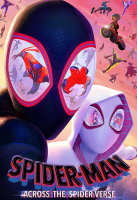









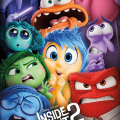

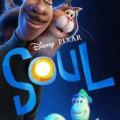
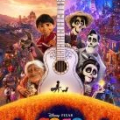
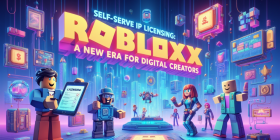

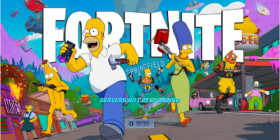
Leave a comment
Your comment is awaiting moderation. We save your draft here
0 Comments